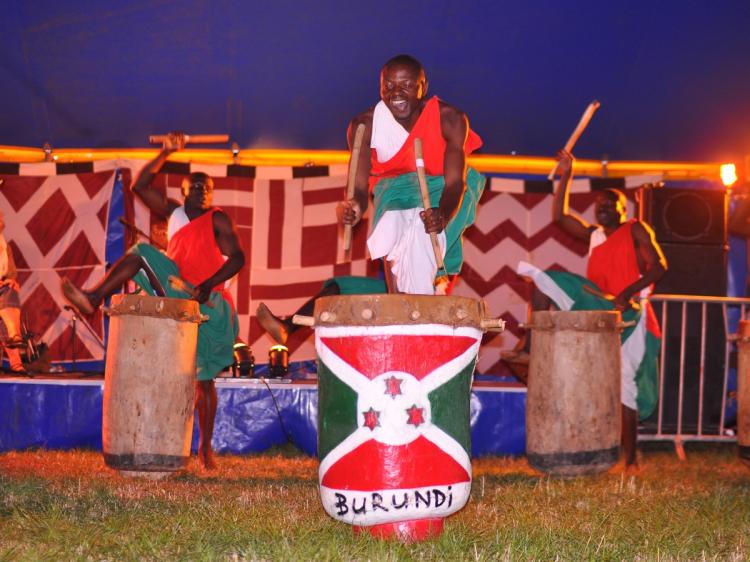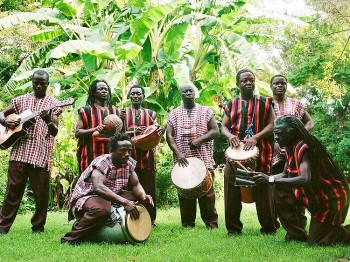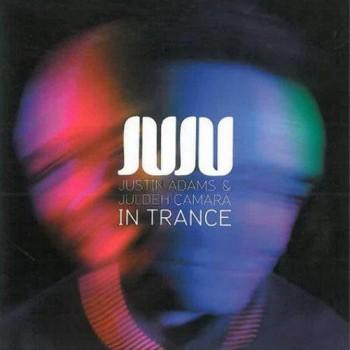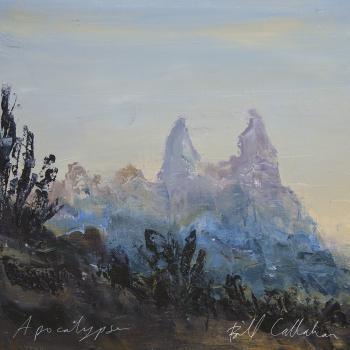The Drummers Of Burundi hail from the Republic of Burundi, a landlocked country in the Great Lakes region of eastern Africa. One of the 10 poorest countries in the world, they have a rich and profound musical heritage, steeped in myth and legend, and played in much the same way today as it was at its origin.
The drummers have been touring the world since the 1960s, releasing several of their own albums and notably appearing on Joni Mitchell’s The Hissing of Summer Lawns (1975). They performed at the first ever WOMAD festival, held in Shepton Mallet (UK) in 1982, and have been firm favourites ever since.
The Drummers make a grand entrance. The Master of Ceremonies (Gabriel Ntagabo) initiates call and response in the Kirundi tongue to ensure the drummers are ready. Then the procession begins. All dressed in traditional attire, the leader dances with grand expansive movements, and the drummers follow behind, each balancing the up to 33 kilogram Ingoma drum on his head, beating it with a stick simultaneously.
Upon arrival, the drums are placed on the floor without losing the rhythm, and the tempo immediately picks up. Tremendous energy is created, and the WOMAD workshop crowd were left breathless, rewarding the Drummers with sustained and rapturous applause.
The dancing that accompanies the drumming is immensely invigorating and expressive, extremely well controlled, and at times regal in its postures.
Historically performed during a three-week annual ceremony to inspire and protect the people before the work in the fields began, you can sense the life force and the momentum created.
Each leap and movement has a specific meaning. For example, the rapid motion of the stick around the neck signifies the sacrificial element of the dance: “If I fail to respect the country and the law, may my neck be cut and bled”, the dancer is saying.
Impassioned chanting follows the drum and dance, and at times the drummers are leaping behind their instruments as they play. The unity is incredible and the rhythms complex, as the ten Ingomas interweave with each other,
It is an intense and energising experience that draws you effortlessly into the cultures and traditions of an ancient African kingdom, clearly revealing the close connection between music, dance and history.
The drummers have been touring the world since the 1960s, releasing several of their own albums and notably appearing on Joni Mitchell’s The Hissing of Summer Lawns (1975). They performed at the first ever WOMAD festival, held in Shepton Mallet (UK) in 1982, and have been firm favourites ever since.
The Drummers make a grand entrance. The Master of Ceremonies (Gabriel Ntagabo) initiates call and response in the Kirundi tongue to ensure the drummers are ready. Then the procession begins. All dressed in traditional attire, the leader dances with grand expansive movements, and the drummers follow behind, each balancing the up to 33 kilogram Ingoma drum on his head, beating it with a stick simultaneously.
Upon arrival, the drums are placed on the floor without losing the rhythm, and the tempo immediately picks up. Tremendous energy is created, and the WOMAD workshop crowd were left breathless, rewarding the Drummers with sustained and rapturous applause.
The dancing that accompanies the drumming is immensely invigorating and expressive, extremely well controlled, and at times regal in its postures.
Historically performed during a three-week annual ceremony to inspire and protect the people before the work in the fields began, you can sense the life force and the momentum created.
Each leap and movement has a specific meaning. For example, the rapid motion of the stick around the neck signifies the sacrificial element of the dance: “If I fail to respect the country and the law, may my neck be cut and bled”, the dancer is saying.
Impassioned chanting follows the drum and dance, and at times the drummers are leaping behind their instruments as they play. The unity is incredible and the rhythms complex, as the ten Ingomas interweave with each other,
It is an intense and energising experience that draws you effortlessly into the cultures and traditions of an ancient African kingdom, clearly revealing the close connection between music, dance and history.







